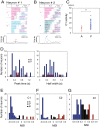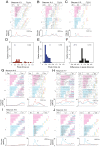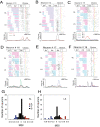Neuronal activity in the monkey prefrontal cortex during a duration discrimination task with visual and auditory cues
- PMID: 34471190
- PMCID: PMC8410858
- DOI: 10.1038/s41598-021-97094-w
Neuronal activity in the monkey prefrontal cortex during a duration discrimination task with visual and auditory cues
Abstract
To investigate neuronal processing involved in the integration of auditory and visual signals for time perception, we examined neuronal activity in prefrontal cortex (PFC) of macaque monkeys during a duration discrimination task with auditory and visual cues. In the task, two cues were consecutively presented for different durations between 0.2 and 1.8 s. Each cue was either auditory or visual and was followed by a delay period. After the second delay, subjects indicated whether the first or the second cue was longer. Cue- and delay-responsive neurons were found in PFC. Cue-responsive neurons mostly responded to either the auditory or the visual cue, and to either the first or the second cue. The neurons responsive to the first delay showed activity that changed depending on the first cue duration and were mostly sensitive to cue modality. The neurons responsive to the second delay exhibited activity that represented which cue, the first or second cue, was presented longer. Nearly half of this activity representing order-based duration was sensitive to cue modality. These results suggest that temporal information with visual and auditory signals was separately processed in PFC in the early stage of duration discrimination and integrated for the final decision.
© 2021. The Author(s).
Conflict of interest statement
The authors declare no competing interests.
Figures







References
Publication types
MeSH terms
LinkOut - more resources
Full Text Sources
Miscellaneous

